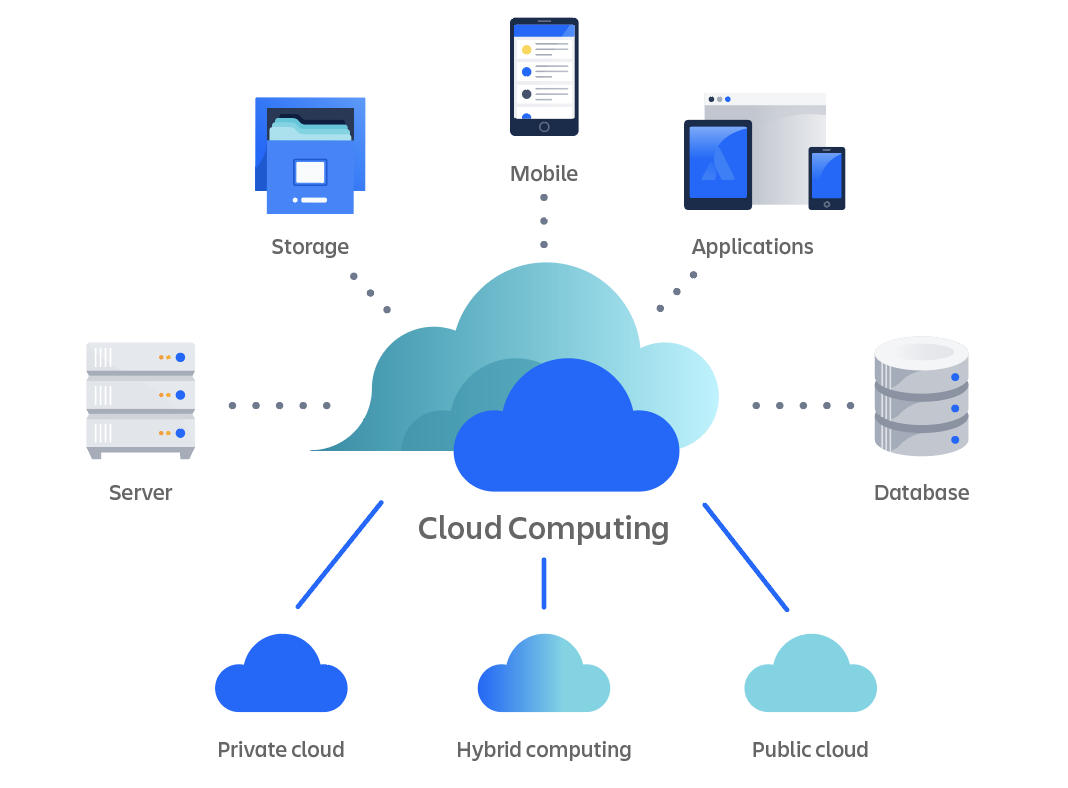Grasping LinkDaddy Cloud Services: The Ultimate Guide to Cloud Services Press Release Techniques
Simplify Your Facilities With Cloud Services
As services browse the ever-evolving landscape of innovation and information monitoring, the duty of cloud services in simplifying framework has come to be significantly prominent. Just how can organizations properly browse this change and genuinely unlock the potential of cloud services for simplifying their framework?
Advantages of Cloud Provider
Cloud solutions provide a streamlined strategy to managing IT facilities, providing services with flexibility, scalability, and cost-efficiency. Among the crucial advantages of cloud services is the scalability they use. Services can conveniently scale their resources up or down based upon need, ensuring they only spend for what they use. This versatility is especially advantageous for services with rising and fall demands or those experiencing development.
In addition, cloud services eliminate the requirement for companies to purchase expensive hardware and software application. This cost-efficiency is a substantial benefit, specifically for tiny to medium-sized business seeking to reduce upfront prices. By utilizing cloud services, businesses can access top notch IT sources without the large cost tag connected with conventional infrastructure setups.
Furthermore, cloud services supply businesses with the adaptability to access their data and applications from anywhere with a net link. This level of ease of access boosts collaboration amongst groups, makes it possible for remote work, and increases general efficiency. The flexibility offered by cloud services empowers services to adapt quickly to changing market conditions and customer needs.
Price Savings and Scalability
In enhancement to the functional advantages highlighted earlier, the combination of cloud solutions right into a firm's framework generates considerable price financial savings and enhanced scalability. Cloud solutions offer a pay-as-you-go model, allowing businesses to range sources up or down based upon existing demands, therefore staying clear of the prices related to keeping excess ability. This adaptability allows business to adapt quickly to fluctuating demands without sustaining unneeded costs.
Additionally, cloud services eliminate the need for ahead of time investments in equipment and software program, minimizing capital investment. Operating budget are additionally reduced as firms no more require to manage and maintain physical web servers, resulting in lower energy consumption and IT staffing expenses. In addition, cloud services provide automatic updates and upkeep, making sure that the facilities stays current and safe and secure without calling for hand-operated treatments.
Enhanced Security Procedures
Implementing strict safety and security steps is paramount when incorporating cloud services into a company's infrastructure to make certain and safeguard delicate data conformity with sector regulations. Cloud service providers supply boosted safety attributes such as data encryption, firewall defense, and multi-factor verification to mitigate cybersecurity risks.
Furthermore, routine protection audits and conformity analyses aid guarantee and recognize vulnerabilities adherence to industry standards. Firms can also benefit from functions like computerized safety and security updates and real-time hazard surveillance provided by cloud provider. By focusing on protection actions and remaining positive in dealing with possible dangers, companies can with confidence leverage cloud services while protecting their Learn More useful information from unapproved access or breaches.
Transitioning to Cloud Infrastructure
To effectively incorporate cloud services right into a business's infrastructure, an organized technique that attends to the shift towards cloud-based options is necessary. Transitioning to cloud facilities includes careful planning and implementation to ensure a smooth movement procedure. The primary step is to examine the current facilities and figure out which applications and systems appropriate for migration to the cloud. This examination ought to consider variables such as information sensitivity, conformity needs, and efficiency requirements.
Once the evaluation is complete, a migration strategy ought to be created. This technique ought to detail the timeline, resources, and responsibilities for moving each part to the cloud. It is necessary to communicate this strategy clearly to all stakeholders to ensure alignment and lessen disturbances during the change.
During the movement tracking, testing and process are vital to identify and attend to any problems promptly. Routine checkpoints should be developed to track progression and make needed changes. In addition, training for workers on making use of cloud services ought to be provided to make certain a successful transition and make best use of the advantages of the new infrastructure.
Best Practices for Cloud Fostering
Successful adoption of cloud solutions rests on the strategic placement of service goals with technical capacities and organizational preparedness. additional reading To make certain a smooth change to the cloud, organizations ought to begin by performing a comprehensive evaluation of their current infrastructure and recognizing which workloads are best fit for cloud movement. It is critical to entail crucial stakeholders from different departments in the decision-making procedure to gain buy-in and resolve any type of issues early.
One more best method for cloud adoption is to focus on security and compliance. Organizations has to thoroughly evaluate the security steps used by cloud solution carriers and make sure that their data is safeguarded according to sector criteria and regulative requirements. Applying robust next page data file encryption, access controls, and routine safety and security audits can help minimize threats associated with cloud fostering.
Conclusion

As services navigate the ever-evolving landscape of technology and data management, the function of cloud services in simplifying infrastructure has become increasingly noticeable - linkdaddy cloud services. Exactly how can companies effectively navigate this shift and truly unlock the potential of cloud solutions for streamlining their framework?
Cloud solutions supply a structured approach to handling IT framework, supplying companies with scalability, cost-efficiency, and versatility. By making use of cloud services, businesses can access top notch IT sources without the substantial price tag connected with conventional framework setups.
To make sure a smooth transition to the cloud, companies need to start by carrying out an extensive assessment of their present framework and identifying which workloads are best matched for cloud movement.